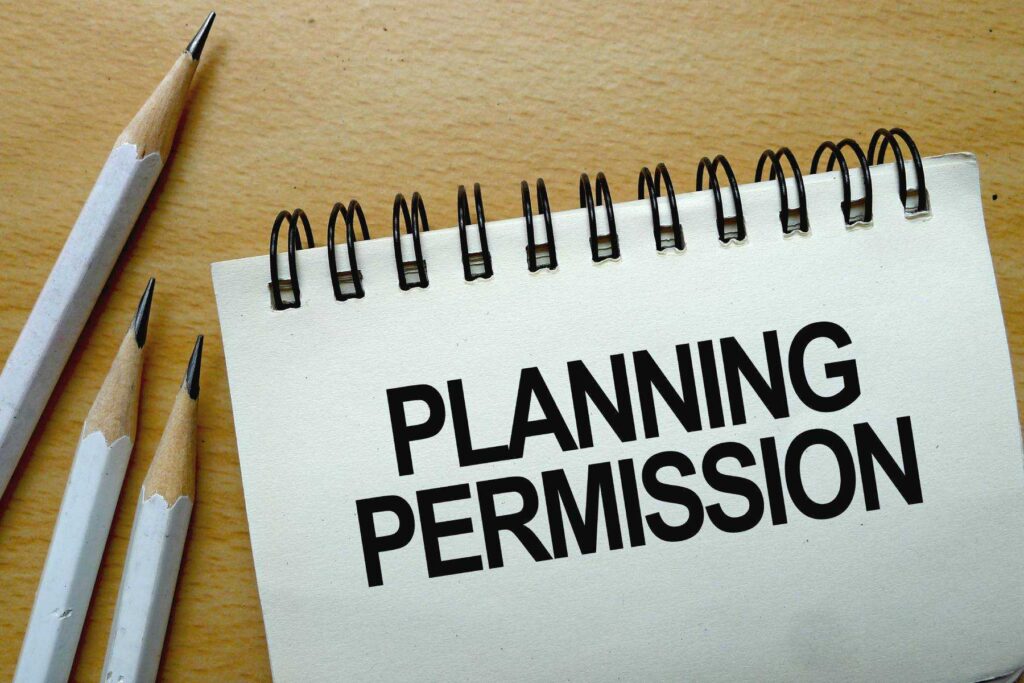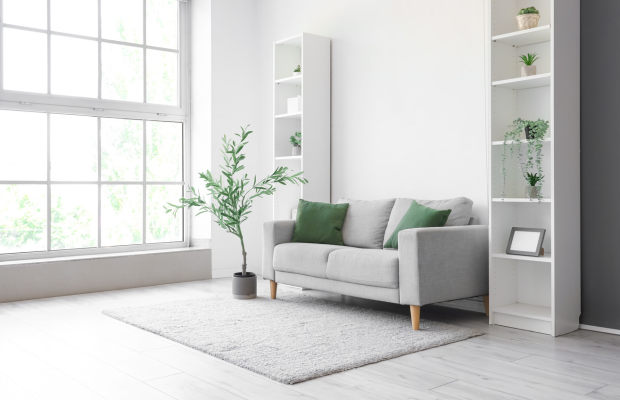Adding an outbuilding to your property can be a great way to utilise the space you have – as well as potentially adding value to your home.
One daunting aspect of constructing any kind of outbuilding, however, is planning permission.
Here, we’ll explain everything you need to know about outbuilding planning permission, including how much it costs and how you go about obtaining it.
What’s classed as an ‘outbuilding’?
The technical term for an outbuilding is ‘a separate structure used for a purpose incidental to the enjoyment of the dwelling house’.
What this essentially means is that an outbuilding is any kind of building that is separate from your main property but is on your land and used by you for additional purposes.
Outbuildings can include:
• Sheds
• Garages
• Workshops
• Summerhouses
• Garden offices
• Barns and agricultural buildings
• Stables
• Kennels
• Swimming pools
Can I build in my garden without planning permission?
All outbuildings are subject to UK planning regulations – but that doesn’t mean you’ll always need to obtain planning permission if you wish to build in your garden.
If what you want to build falls under Permitted Development rules, you may be able to construct it without the need for planning permission.
However, there are other factors that could mean planning permission is required, including:
• If your proposed outbuilding is being constructed on ‘designated land’, i.e. national parks, conservation areas or Areas of Outstanding National Beauty
• If your outbuilding is being built on land around a listed building
• If you’re considering an outbuilding and you live in a flat, apartment or maisonette
How big can a building be without planning permission?
Under Permitted Development, you can construct an outbuilding without planning permission if:
• It is no more than one storey
• Its eave height is no more than 2.5 metres
• Its overall dual pitched roof height is no more than four metres, or three metres for other types of roofs
• Its maximum height is no more than 2.5 metres if the building is being constructed within two metres of a boundary
• Your outbuilding has no raised platforms, balconies or verandas
• Your outbuilding covers no more than half of the area that surrounds your main home
1. Summerhouse planning permission
Summerhouses can be a great way to make use of your outdoor space during the warmer months.
A high-quality summerhouse that complements your home could also boost your property’s value and add a major selling point.
How big can a summerhouse be without planning permission
A summerhouse would normally only require planning permission if:
• It exceeds height specifications under Permitted Development rules
• It covers more than half of the area that surrounds your home
• It will be used as self-contained living accommodation
However, if your summerhouse is being built on designated land within a conservation area, national park or Area of Outstanding Natural Beauty, you may need to apply for planning consent.
Before starting construction of your summerhouse, check with your local planning department so you can be sure you’re following the correct rules and procedures.
2. Barn conversion planning permission
Since 2014, if you wish to convert an existing barn outbuilding into a home in England, you can do so under Permitted Development rules in some cases.
In order to convert your barn with no need for planning permission, the building must:
• Have previously been used solely for agricultural purposes
• Have existed since at least March 2013
• Have a total floor space of no more than 465 square metres
If you want to convert an existing barn but your property lies in a national park, conservation area or Area of Outstanding Natural Beauty, however, you’ll need to obtain planning permission.
Barn conversions are also subject to ‘Prior Notification’.
This means you must notify any boundary neighbours of your plans, so they have the chance to object.
Under Prior Notification, you must also apply to your local authority to establish whether or not you need approval for issues like transport access, noise impact or flood risks.
How big can I build a barn without planning permission?
If you’re constructing a barn on your land solely for agricultural use and the land is 0.5 hectares or more, you may be able to build without the need for planning permission.
Permitted Development rules for agricultural buildings like barns also state:
• The barn must not be used as a dwelling
• It cannot be the first agricultural construction on the land
• It cannot be more than 75 metres away from principal farm buildings
• I cannot be less than 75 metres from any neighbouring house
• The maximum floor space permitted is 500 square metres
• The maximum height permitted is 12 metres
Planning permission for agricultural buildings can be complicated, so always seek advice of your local planning department.
3. Building an outdoor swimming pool
If you have enough land, an outdoor swimming pool can be a great addition to your home and hugely appealing to buyers.
Do you need planning permission for an outdoor swimming pool?
Most outdoor swimming pools fall under Permitted Development, so in most cases, you won’t need planning permission to build one.
Permitted Development rules for outdoor swimming pools are the same as other outbuildings and that means your pool’s size – added to any other outbuildings – should not exceed 50% of the area that surrounds your property.
If your property is a listed building, you’ll need to obtain planning permission to build an outdoor pool.
And while you may be able to construct your pool under Permitted Development if your home sits on designated land, such as an Area of Outstanding Natural Beauty, the size of the pool may be subject to restrictions.
As always, check with your local planning department to establish what you can, and can’t, do.
4. Constructing a garden office
With a rise in home and remote working due to the Covid-19 pandemic, garden offices are becoming more and more common.
A garden office can add value to your property and is also a great way to ensure the space in your home, such as bedrooms, can remain as they were intended.
Do you need planning permission for an outside office?
Under Permitted Development, outbuildings must not:
• Be higher than 2.5 metres to the eaves
• Be higher than four metres if the roof is pitched, or three metres for other types of roofs
• Be higher than 2.5 metres in total if being constructed within two metres of a boundary
If your garden office falls within those stipulations, you may not need planning permission to construct it.
However, under Permitted Development, your garden office must be considered ‘incidental’ to your main property.
This means it must be for use in addition to your home.
So, if you’re running a business from your garden office that means clients will be regularly visiting, you may need planning permission due to the impact on neighbouring properties through additional cars and noise, etc.
Building regulations for outdoor offices
If the floor space of your garden office is less than 15 square metres and there’s no sleeping accommodation, you shouldn’t need building regulations approval.
If the size of your office is between 15 and 30 square metres, you’ll need building regulations approval if it is within one metre of a boundary and constructed from combustible materials.
Any electrics or plumbing installations in your garden office will need to be completed to Building Regulations standards.
5. Adding a shed or a garage?
If you need additional storage at your home, a garage or shed can be a great way to shut away any belongings or items you don’t want in your property.
That additional storage can also be hugely appealing to buyers if you come to sell your home in the future.
What are the planning rules on sheds and garages?
Sheds and garages are subject to Permitted Development rules on height – meaning they should be no higher than 2.5 metres to the eaves and no higher than four metres in total if the roof is pitched.
If your garage or shed is being built within two metres of a boundary, it’s total height must not be more than 2.5 metres to fall under Permitted Development.
Sheds and garages should also not take up more than 50% of the space around your property if you wish to build without planning consent.
How to get outbuilding planning permission
Before you start construction of any outbuilding on your property, always contact your local authority planning department to find out if you need permission, or if you can build under Permitted Development.
If you do need planning consent for your outbuilding, you’ll need to complete a 1APP form, which can be done online.
As well as the main form, you may also need to submit:
• A location plan, which shows the site and the surrounding area
• A site plan, showing the development in detail
• A certificate of ownership that shows you own the property
• An agricultural holdings certificate if you’re converting farm buildings
• A design and access statement showing how issues relating to access are being dealt with
Your local authority planning department may also request additional documentation.
How much does planning permission cost?
Planning application fees vary across the UK and will also depend on the type of planning permission you’re applying for:
Planning permission costs in England
• A full planning application costs £426 for a new dwelling.
• A full planning application for alterations or extensions to a single dwelling costs £206
• An outline planning application costs £426 for each 0.1 hectare
• A householder permission application for minor alterations to a single dwelling costs £206
Planning permission costs in Wales
• A full planning application for a single dwelling costs £460
• An outline planning application costs £460 per 0.1 hectare
• A householder application for minor alterations costs £230
Planning permission costs in Scotland
• A full planning application for a single dwelling and outline applications cost £401
• A householder application for minor alterations costs £202
Further reading…
Land development is becoming more and more popular due to rising property prices – our guide to developing land you already own tells you everything you need to know.
Meanwhile, if you’re looking to make the best of your outdoor space for the warmer months, take a look at these UK outdoor trends.
And if it’s the interior of your home you’re looking to tackle with some DIY, these are the jobs that have been trending during the pandemic lockdowns.




